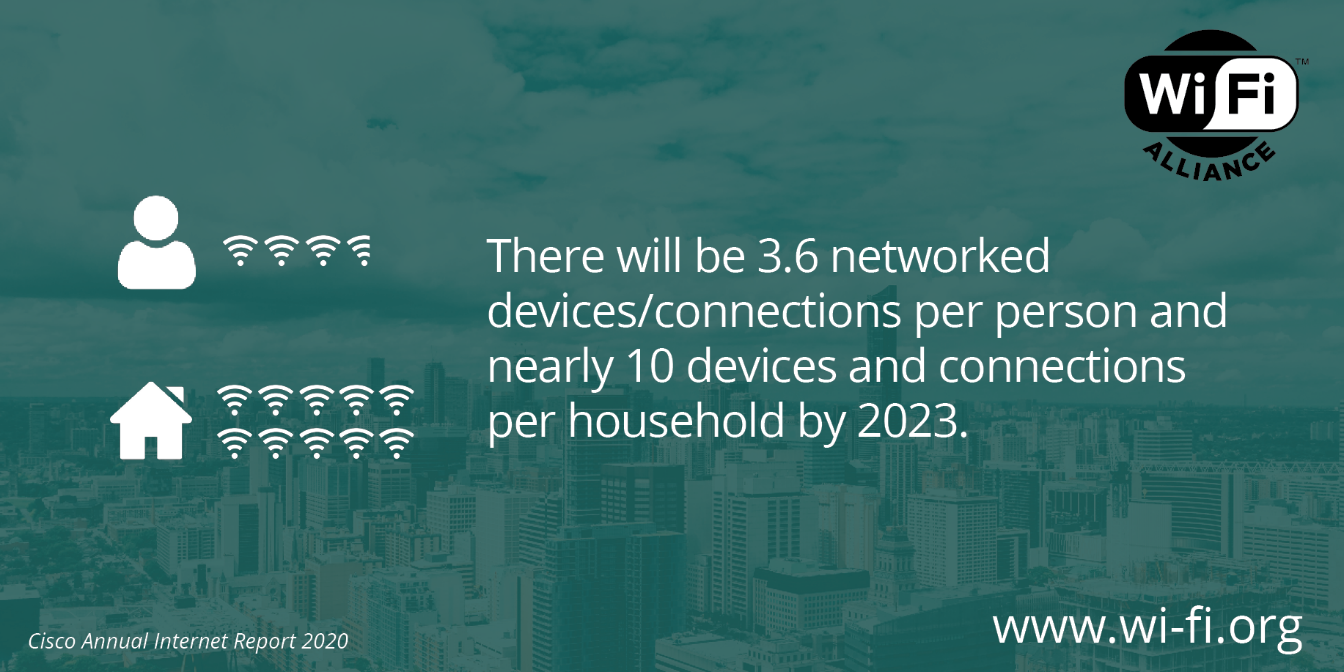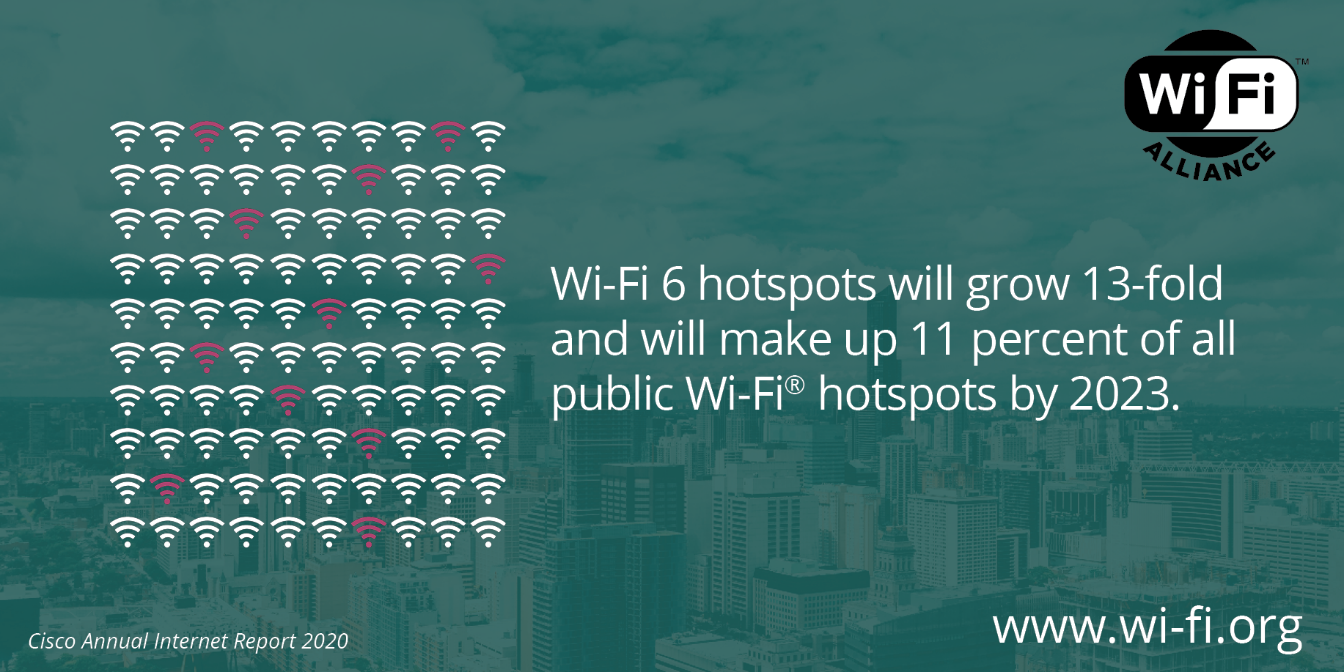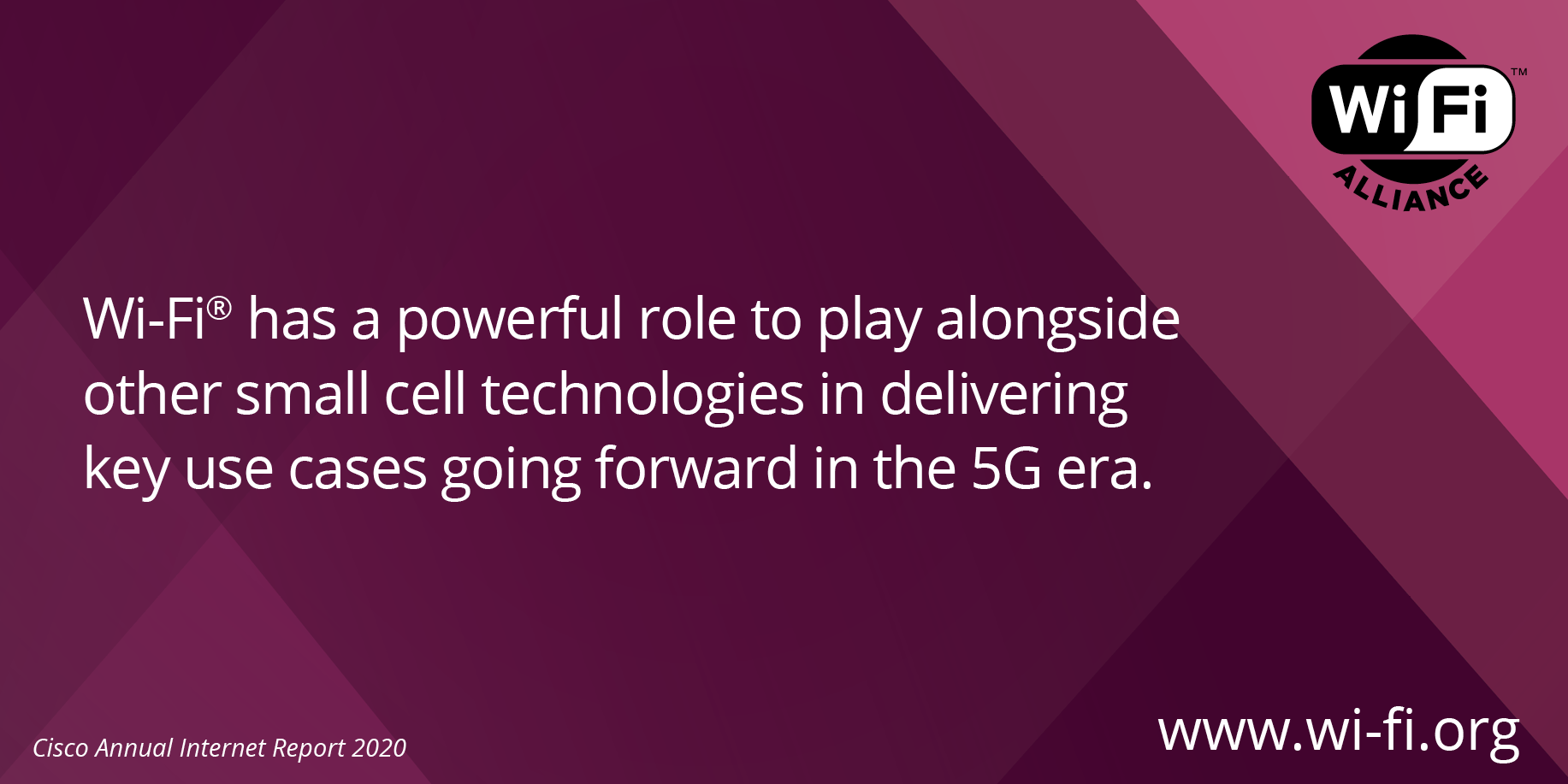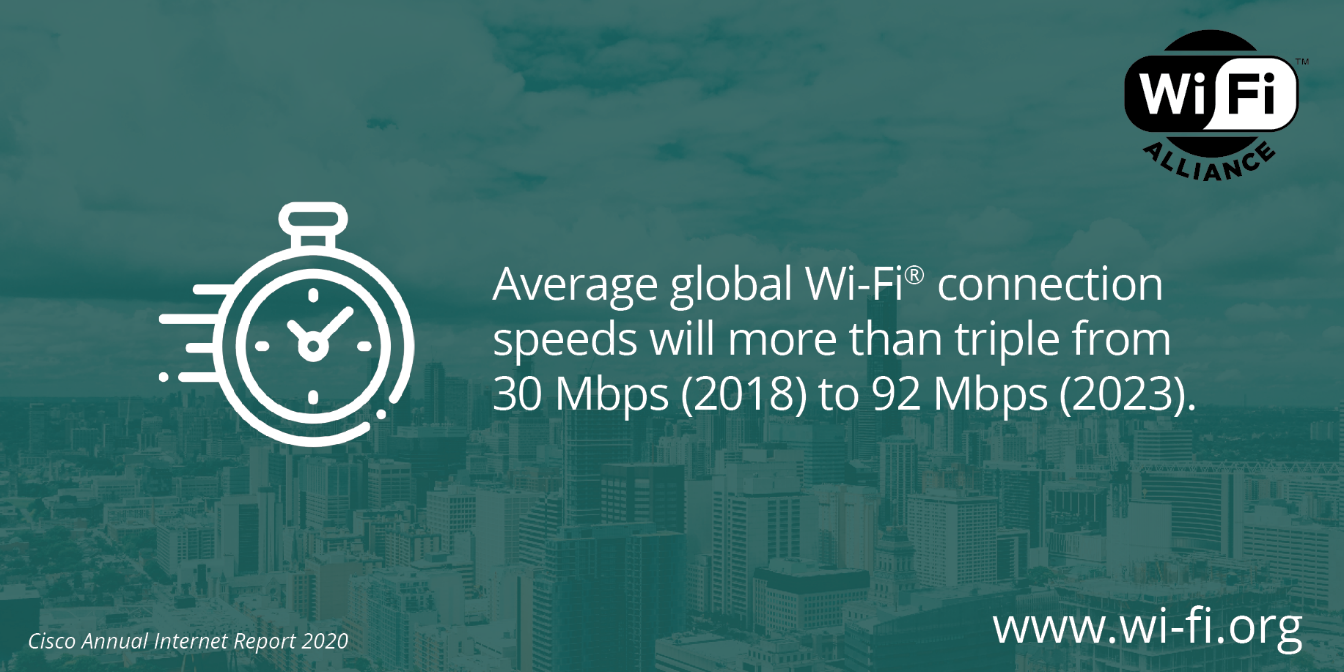Since Wi-Fi® was first introduced in the late 1990s, its impact on the world has been enormous.
Wi-Fi brought connectivity to locations that were previously out of reach for wired connections, made it more convenient and affordable to communicate with friends, family, and colleagues, and has made collaboration and innovation considerably easier. More than 20 years after the first Wi-Fi device came to market, it now contributes more than $2 trillion to the global economy each year.
While Wi-Fi’s history is impressive, its future abounds with potential. This year, Cisco released its Annual Internet Report– previously known as the Visual Network Index (VNI). Among its extensive research findings, the report outlines exciting Wi-Fi trends to expect soon.
Wi-Fi will connect more networked devices per person
In 2018, the average number of devices per person worldwide was 2.4. That number is expected to jump to an average of 3.6 devices per person around the globe by the year 2023. Devices per capita will vary significantly by region and country.
North America and Western Europe will see the most connected devices, with an average of 13.4 and 9.4 devices per person, respectively. When analyzed by country, the United States is expected to support the most devices per person, with 13.6 devices. Korea and Japan are close behind with an expected 12.1 devices per person in Korea, and 11.1 per person in Japan.

Wi-Fi will see exponential hotspot growth
As the number of devices per person continues to increase, the demand for connectivity also spirals upward. To ensure sufficient connectivity for an anticipated 29.3 billion networked devices by 2023, the number of public hotspots will increase exponentially.
In 2018, there were 169 million global public hotspots. By 2023, that number will climb to a total of 628 million global public Wi-Fi hotspots. Of those public Wi-Fi hotspots, 11 percent will be Wi-Fi 6 enabled by 2023, ensuring optimal connectivity and high speed, and efficient performance even in congested public areas.

Wi-Fi connection speeds will triple
By 2023, sixty-six percent of the world’s population will be internet users. And as the number of users will grow, the quality of their Wi-Fi experience will also improve. Wi-Fi users in 2023 will experience historically fast Wi-Fi speeds of up to 92 Mbps—triple the average speed of a Wi-Fi connection in 2018 at 30 Mbps.
Wi-Fi will be key in the expansion of 5G
As more 5G networks are deployed, Wi-Fi will play a crucial role in a variety of use cases for 5G connectivity. The technologies will be complements, and when working together Wi-Fi and 5G will provide higher data rates that will result in increased network capacity with the ability to support more devices and applications.

Wi-Fi has contributed to the global economy, society, and culture in ways that seemed unimaginable when it was first introduced over 20 years ago. According to the report findings, it appears its contributions have only just begun. Wi-Fi will only continue connecting everyone, everything, everywhere.
The statements and opinions by each Wi-Fi Alliance member and those providing comments are theirs alone, and do not reflect the opinions or views of Wi-Fi Alliance or any other member. Wi-Fi Alliance is not responsible for the accuracy of any of the information provided by any member in posting to or commenting on this blog. Concerns should be directed to info@wi-fi.org.





Add new comment